1. Introduction
Since Kermack and McKendrick [13] proposed the classical deterministic compartmental model (called SIR model) to describe epidemic outbreaks and spread, mathematical models have become important tools in analyzing the spread and control of infectious diseases, see [1,2,5,9,11,12,20,21,27] and references therein. The number of infected individuals used in these models is usually calculated via data in the hospitals. However, some studies on influenza show that some individuals of the population who are infected never develop symptoms, i.e. being asymptomatically infective. The asymptomatically infected individuals will not go to hospital but they can infect the susceptible by contact, then progress to the recovered stage, see for instance [3,14,22]. Hence, using the data from hospitals to mathematical models to assess the epidemic will underestimate infection risks.
On the other hand, seasonality is very common in ecological and human social systems (cf. [26]). For example, variation patterns in climate are repeated every year, birds migrate according to the variation of season, opening and closing of schools are almost periodic, and so on. These seasonal factors significantly influence the survival of pathogens in the environment, host behavior, and abundance of vectors and non-human hosts. A number of papers have suggested that seasonality plays an important role in epidemic outbreaks and the evolution of disease transmissions, see [4,6,8,9,16,17,19,21,28]. However, it is still challenging to understand the mechanisms of seasonality and their impacts on the dynamics of infectious diseases.
Motivated by the above studies on asymptomatic infectivity or seasonality, we develop a compartmental model with asymptomatic infectivity and seasonal factors in this paper. This model is a periodic discontinuous differential system. We try to establish the theoretical analysis on the periodic discontinuous differential systems and study the dynamics of the model. This will allow us to draw both qualitative and quantitative conclusions on the effect of asymptomatic infectivity and seasonality on the epidemic.
The rest of the paper is organized as follows. In section 2, we formulate the SIRS model with asymptomatic infective and seasonal factors, then discuss the existence and regularity of non-negative solutions for this model. In section 3, we define the basic reproduction number R0 for the model, give the evaluation of R0 and investigate the threshold dynamics of the model (or the uniformly persistent of the disease). It is shown that the length of the season, the transmission rate and the existence of asymptomatic infection affect the basic reproduction number R0. In section 4, we study the global dynamics of the model ignoring seasonal factor. We prove that there is a unique disease-free equilibrium and the disease always dies out when R0≤1; while when R0>1 there is an endemic equilibrium which is global stable if the recovering rates of asymptomatic infective and symptomatic infective are close. A brief discussion is given in the last section.
2. Model formulation
In this section, we first extend the classic SIRS model to a model which incorporates with the asymptomatic infective and seasonal features of epidemics, and then study the regularity of solutions of the model.
Because there are asymptomatically infectious and symptomatically infectious individuals in the evolution of epidemic, the whole population is divided into four compartments: susceptible, asymptomatically infectious, symptomatically infectious and recovered individuals. More precisely, we let S, Ia, Is and R denote the numbers of individuals in the susceptible, asymptomatic, symptomatic and recovered compartments, respectively, and N be the total population size. Let R+=[0,+∞), Z+ be the set of all nonnegative integers, and ω>0 be given as the period of the disease transmissions. In addition to the assumptions of the classical SIRS model, we list the following assumptions on seasonal factors, asymptomatic infectivity and symptomatic infectivity.
(A1) Due to the opening and closing of schools or migration of birds, each period of the disease transmission is simply divided into two seasons with high and low transmission rates, which are called high season J2 and low season J1, respectively. The seasonality is described by a piecewise constant function with high transmission rate β2 in J2 and low transmission rate β1 in J1, respectively, where J1=[mω,mω+(1−θ)ω) and J2=[mω+(1−θ)ω,(m+1)ω). Here m∈Z+, and 0<θ<1 which measures the fraction of the high season to the whole infection cycle.
(A2) There are two classes of infective individuals: asymptomatically infective ones and symptomatically infective ones. Both of them are able to infect susceptible individuals by contact. A fraction μ of infective individuals proceeds to the asymptomatically infective compartment and the remainder (i.e. a fraction 1−μ of infective individuals) goes directly to the symptomatically infective compartment. And the asymptomatically infective and symptomatically infective individuals recover from disease at rate ra and rs, respectively.
(A3) The symptomatically infective individuals will get treatment in hospital or be quarantined. Hence, the symptomatic infective individuals reduce their contact rate by a fraction α.
Based on these assumptions, the classical SIRS model can be extended to the following system
|
{˙S(t)=dN(t)−dS(t)−β(t)S(t)(Ia(t)+αIs(t))+σR(t),˙Ia(t)=μβ(t)S(t)(Ia(t)+αIs(t))−(d+ra)Ia(t),˙Is(t)=(1−μ)β(t)S(t)(Ia(t)+αIs(t))−(d+rs)Is(t),˙R(t)=raIa(t)+rsIs(t)−(d+σ)R(t),
|
(2.1)
|
where N(t)=S(t)+Ia(t)+Is(t)+R(t), all parameters d, α, σ, μ, ra and rs are nonnegative, and
|
β(t)={β1, t∈J1=[mω,mω+(1−θ)ω),β2, t∈J2=[mω+(1−θ)ω,(m+1)ω).
|
Parameters β2 and β1 are the rates of contact transmission of the disease in high season and low season respectively for which β2≥β1≥0. Besides, d is both the birth rate and death rate, α, 0≤α≤1, is the fraction of the symptomatically infective individuals reducing their contact rate with susceptible, the fraction of infective individuals becoming asymptomatically infective μ satisfies 0≤μ≤1, parameter σ is the rate of recovered population loss of the immunity and reentering the susceptible group, and ra and rs are the rates of asymptomatic infective and symptomatic infective recovering with immunity, respectively. Note that the transmission rate β(t) is a piecewise function or a step function. This idea has appeared in some literatures such as [19,24,15,10].
From the biological point of view, we focus on the solutions of system (2.1) with initial conditions
|
S(0)=S0≥0,Ia(0)=Ia0≥0,Is(0)=Is0≥0,R(0)=R0≥0
|
(2.2)
|
in the first octant R4+.
Note that
|
˙N(t)=˙S(t)+˙Ia(t)+˙Is(t)+˙R(t)≡0, t∈J1 or t∈J2.
|
Hence, N(t)=S0+Ia0+Is0+R0, which is a constant for almost all t∈R+. Since the total population does not change by the assumption, we let
for almost all t∈R+. Therefore, system (2.1) with the initial conditions (2.2) in R4+ can be reduced to
|
{˙S=(d+σ)(N−S)−β(t)S(Ia+αIs)−σ(Ia+Is),˙Ia=μβ(t)S(Ia+αIs)−(d+ra)Ia,˙Is=(1−μ)β(t)S(Ia+αIs)−(d+rs)Is,S(0)=S0,Ia(0)=Ia0,Is(0)=Is0,P0=(S0,Ia0,Is0)∈D0,
|
(2.3)
|
where D0⊂R3+ and
|
D0:={(S,Ia,Is)|S≥0,Ia≥0,Is≥0, 0≤S+Ia+Is≤N}.
|
(2.4)
|
Clearly, the right hand side of system (2.3) is not continuous on the domain R+×D0. We claim that the solution of system (2.3) exists globally on the interval R+=[0,+∞) and is unique.
Theorem 2.1. For any P0∈D0, system (2.3) has a unique global solution φ(t,P0)=(S(t,P0),Ia(t,P0),Is(t,P0)) in R+, which is continuous with respect to t and all parameters of this system.
Moreover, φ(t,P0)⊆D0 for any t∈R+ and the solution φ(t,P0) is differentiable with respect to P0, where some derivatives are one-sided if P0 is on the domain boundary.
Proof. Assume that φ(t,P0) is a solution of system (2.3). We first consider the two systems
|
{˙S=(d+σ)(N−S)−βiS(Ia+αIs)−σ(Ia+Is),˙Ia=μβiS(Ia+αIs)−(d+ra)Ia,˙Is=(1−μ)βiS(Ia+αIs)−(d+rs)Is,S(t∗)=S∗,Ia(t∗)=Ia∗,Is(t∗)=Is∗,P∗=(S∗,Ia∗,Is∗)∈R3+
|
(2.5)
|
in the domain R+×R3+, i=1,2, respectively.
It is clear that for each i the solution of system (2.5) exists and is unique on its maximal interval of existence, and the solution of system (2.5) is differentiable with respect to the initial value P∗ by the fundamental theory of ordinary differential equations.
Note that the bounded closed set D0 in R3+ is a positive compact invariant set of system (2.5) since the vector field of system (2.5) on the boundary ∂D0 of D0 is directed toward to the interior of D0 or lies on ∂D0, where
|
∂D0={(S,Ia,Is): (S,Ia,Is)∈R3+,S=0, 0≤Ia+Is≤N}∪{(S,Ia,Is): (S,Ia,Is)∈R3+,Is=0, 0≤S+Ia≤N}∪{(S,Ia,Is): (S,Ia,Is)∈R3+,Ia=0, 0≤S+Is≤N}∪{(S,Ia,Is): (S,Ia,Is)∈R3+,S+Is+Ia=N}.
|
Therefore, the solution of system (2.5) exists globally for any P∗∈D0⊂R3+, and these solutions are in D0 for all t>0.
Let ϕi(t,t∗,P∗) for i=1,2 be the solution semiflow of the following system
|
{˙S=(d+σ)(N−S)−βiS(Ia+αIs)−σ(Ia+Is),˙Ia=μβiS(Ia+αIs)−(d+ra)Ia,˙Is=(1−μ)βiS(Ia+αIs)−(d+rs)Is,ϕi(t∗,t∗,P∗)=P∗, P∗∈D0,
|
(2.6)
|
respectively, that is, ϕi(t,t∗,P∗)=(S(t,t∗,P∗),Ia(t,t∗,P∗),Is(t,t∗,P∗)) for t≥t∗ is the solution of system (2.6) with the initial condition ϕi(t∗,t∗,P∗)=(S∗,Ia∗,Is∗)∈D0, respectively.
It follows that the solution φ(t,P0) for t≥0 of system (2.3) can be determined uniquely by induction. For simplicity, we let sm=(m−1)ω and tm=sm+(1−θ)ω for m∈Z+. Hence,
|
[0,∞)=∞⋃m=1[sm,sm+1]=∞⋃m=1([sm,tm]∪[tm,sm+1]),
|
and φ(t,P0) can be written as follows.
|
φ(t,P0)={ϕ1(t,s1,P0)whent∈[s1,t1],ϕ2(t,t1,ϕ1(t1,s1,P0))whent∈[t1,s2],...ϕ1(t,sm,um)whent∈[sm,tm],ϕ2(t,tm,vm)whent∈[tm,sm+1],
|
(2.7)
|
where um and vm are determined by letting u1=P0, v1=ϕ1(t1,s1,u1) and
|
um=ϕ2(sm,tm−1,vm−1),vm=ϕ1(tm,sm,um)form≥2.
|
This implies that the solution φ(t,P0) of system (2.3) exits globally in R+ and is unique for any P0∈D0, and it is continuous with respect to t and all parameters.
By the expression (2.7), it is easy to see that the solution φ(t,P0) lies in D0 for all t≥0 and φ(t,P0) is differentiable with respect to P0. The proof is completed.
Theorem 2.1 tells us that system (2.3) is ω-periodic with respect to t in R+×D0, and it suffices to investigate the dynamics of its associated period map P on D0 for the dynamics of system (2.3), where
|
P: D0→D0,P(P0)=φ(ω,P0)=ϕ2(ω,(1−θ)ω,ϕ1((1−θ)ω,0,P0)),
|
(2.8)
|
which is continuous in D0.
3. Basic reproduction number and threshold dynamics
In epidemiology, the basic reproduction number (or basic reproduction ratio) R0 is an important quantity, defined as the average number of secondary infections produced when an infected individual is introduced into a host population where everyone is susceptible. It is often considered as the threshold quantity that determines whether an infection can invade a new host population and persist. Detailedly speaking, if R0<1, the disease dies out and the disease cannot invade the population; but if R0>1, then the disease is established in the population. There have been some successful approaches for the calculations of basic reproduction number for different epidemic models. For example, Diekmann et al [7] and van den Driessche and Watmough [23] presented general approaches of calculating R0 for autonomous continuous epidemic models. And for periodic continuous epidemic models, Wang and Zhao in [25] defined the basic reproduction number. To our knowledge, there is no theoretic approach to calculate the basic reproduction number for periodic discontinuous epidemic models such as system (2.3). In this section, we use the idea and some notations given in [25] to define and calculate the basic reproduction numbers for system (2.3), and discuss the uniform persistence of the disease and threshold dynamics.
We define X to be the set of all disease-free states of system (2.3), that is
|
X={(S,Ia,Is): 0≤S≤N,Ia=Is=0}.
|
Clearly, the disease-free subspace X is positively invariant for system (2.3). It can be checked that the period map P(P0) in X has a unique fixed point at (N,0,0), which is a unique disease-free equilibrium (N,0,0) of system (2.3), denoted by E0. We now consider a population near the disease-free equilibrium E0.
For simplicity, we let x=(S,Ia,Is)T, and for i=1,2 set
|
Fi=(0000μβiNαμβiN0(1−μ)βiNα(1−μ)βiN):=(000Fi),Vi=(d+σβiN+σαβiN+σ0d+ra000d+rs):=(d+σbi0V).
|
Then the linearized system of (2.3) at E0 can be rewritten as
where F(t)=χJ1(t)F1 +χJ2(t)F2 , V(t)=χJ1(t)V1+χJ2(t)V2, and
|
χJi(t)={1 as t∈Ji,0 as t∉Ji.
|
System (3.1) is a piecewise continuous periodic linear system with period ω in t∈R+. In order to determine the fate of a small number of infective individuals introduced into a disease-free population, we first extend system (3.1) from t∈R+ to t∈R, and introduce some new notations. When t∈∪+∞m=−∞(J1∪J2)=(−∞,+∞), we set I(t)=(Ia(t),Is(t))T, and
|
F(t)=χJ1(t)F1 +χJ2(t)F2=(μNβ(t)αμNβ(t)(1−μ)Nβ(t)α(1−μ)Nβ(t)),
|
where
|
β(t)={β1, t∈J1=[mω,mω+(1−θ)ω),β2, t∈J2=[mω+(1−θ)ω,(m+1)ω), m∈Z.
|
Clearly, F(t) is a 2×2 piecewise continuous periodic matrix with period ω in R, and it is non-negative. And
which is cooperative in the sense that the off-diagonal elements of −V are non-negative.
Let Y(t,s), t≥s, be the evolution operator of the linear system
Since V is a constant matrix, for each s∈R the matrix Y(t,s) satisfies
|
ddtY(t,s)=−VY(t,s), t≥s, Y(s,s)=E2,
|
(3.3)
|
where E2 is a 2×2 identity matrix, and Y(t,s)=e−V(t−s). Hence, the monodromy matrix Φ−V(t) of system (3.2) is Y(t,0), that is,
|
Φ−V(t)=e−Vt=(e−(d+ra)t00e−(d+rs)t),
|
where d, ra and rs are positive numbers.
We denote ‖⋅‖1 the 1-norm of vectors and matrices. Thus, there exist K>0 and κ>0 such that
|
‖Y(t,s)‖1≤Ke−κ(t−s), ∀t≥s, s∈R.
|
From the boundedness of F(t), i.e. ‖F(t)‖1<K1, it follows that there exists a constant K1>0 such that
|
‖Y(t,t−a)F(t−a)‖1≤KK1e−κa, ∀t∈R, a∈[0,+∞).
|
(3.4)
|
We now consider the distribution of infected individuals in the periodic environment. Assume that I(s) is the initial distribution of infected individuals in infectious compartments. Then F(s)I(s) is the distribution of new infections produced by the infected individuals who were introduced at time s. Given t≥s, then Y(t,s)F(s)I(s) is the distribution of those infected individuals who were newly infected at time s and still remain in the infected compartments at time t. Thus, the integration of this distribution from −∞ to t
|
∫t−∞Y(t,s)F(s)I(s)ds=∫∞0Y(t,t−a)F(t−a)I(t−a)da
|
gives the distribution of cumulative new infections at time t produced by all those infected individuals introduced at times earlier than t.
Let Cω=C(R,R2) be the ordered Banach space of ω-periodic continuous functions from R to R2, which is equipped with the norm ‖⋅‖c,
and the generating positive cone
|
\mathbb{C}^+_{\omega}=\{\mathbb{I}(s)\in \mathbb{C}_{\omega}:\ \mathbb{I}(s)\ge 0, \ s\in \mathbb{R}\}.
|
Define a linear operator \mathcal{L}: \ \mathbb{C}_{\omega}\to \mathbb{C}_{\omega} by
|
(\mathcal{L}\mathbb{I})(t)=\int_{-\infty}^tY(t,s)\mathbb{F}(s)\mathbb{I}(s)ds=\int_0^{\infty}Y(t,t-a)\mathbb{F}(t-a)\mathbb{I}(t-a)da.
|
(3.5)
|
It can be checked that the linear operator \mathcal{L} is well defined.
Lemma 3.1. The operator \mathcal{L} is positive, continuous and compact on \mathbb{C}_{\omega}.
Proof. Since Y(t,s)=e^{-V(t-s)} and \mathbb{F}(t) is a nonnegative bounded matrix, we get that \mathcal{L}(\mathbb{C}^+_{\omega})\subset \mathbb{C}^+_{\omega}. This implies that the linear operator \mathcal{L} is positive.
We now prove the continuity of \mathcal{L}. For each t\in \mathbb{R}, we have
|
\begin{split}
\|\mathcal{L}\mathbb{I}(t)\|_{1}&=\left \|\int_0^{\infty}Y(t,t-a)\mathbb{F}(t-a)\mathbb{I}(t-a)da\right \|_{1}\\
&=\left \|\sum\limits_{j=0}^\infty\int_{j\omega}^{(j+1)\omega}Y(t,t-a)\mathbb{F}(t-a)\mathbb{I}(t-a)da\right \|_{1}\\
&\leq \sum\limits_{j=0}^\infty\int_{j\omega}^{(j+1)\omega}\|Y(t,t-a)\mathbb{F}(t-a)\mathbb{I}(t-a)\|_{1}da\\
&\leq \sum\limits_{j=0}^\infty\int_{j\omega}^{(j+1)
\omega}KK_1e^{-\kappa a}\|\mathbb{I}(t-a)\|_1da\\
&\leq \omega K K_1\sum\limits_{j=0}^\infty e^{-\kappa\omega j}\cdot\|\mathbb{I}\|_c
\end{split}
|
by (3.4). Hence,
|
\|\mathcal{L}\mathbb{I}(t)\|_{c}=\max\limits_{t\in[0,\omega]}\|\mathcal{L}\mathbb{I}(t)\|_{1}\leq \omega K K_1\sum\limits_{j=0}^\infty e^{-\kappa\omega j}\cdot\|\mathbb{I}\|_c,
|
which implies that \mathcal{L} is continuous and uniformly bounded since \sum_{j=0}^\infty e^{-\kappa\omega j} is convergent.
In the following we prove the compactness of \mathcal{L}. We first claim that \mathcal{L}\mathbb{I}(t) is equicontinuous. Consider \mathbb{I}(t)\in \mathbb{C}_{\omega} and \forall t_1,t_2\in [0,\omega] with t_1<t_2. Then
|
\begin{split}
&\|\mathcal{L}\mathbb{I}(t_2)-\mathcal{L}\mathbb{I}(t_1)\|_1=\left\|\int_{-\infty}^{t_2}Y(t_2,s)\mathbb{F}(s)\mathbb{I}(s)ds-
\int_{-\infty}^{t_1}Y(t_1,s)\mathbb{F}(s)\mathbb{I}(s)ds\right \|_1\\
&=\left \|\int_{-\infty}^{t_2}(Y(t_2,s)-Y(t_1,s))\mathbb{F}(s)\mathbb{I}(s)ds
+\int_{t_1}^{t_2}Y(t_1,s)\mathbb{F}(s)\mathbb{I}(s)ds\right \|_1\\
&\leq \int_{-\infty}^{t_2}\|Y(t_2,s)-Y(t_1,s)\|_1\|\mathbb{F}(s)\|_1\|\mathbb{I}(s)\|_1ds+\int_{t_1}^{t_2}\|Y(t_1,s)\|_1\|\mathbb{F}(s)\|_1\|\mathbb{I}(s)\|_1ds\\
&\leq \int_{-\infty}^{\omega}\|Y(t_2,s)-Y(t_1,s)\|_1\|\mathbb{F}(s)\|_1\|\mathbb{I}(s)\|_1ds+\int_{t_1}^{t_2}Ke^{-\kappa (t_1-s)}
\|\mathbb{F}(s)\|_1\|\mathbb{I}(s)\|_1ds\\
&\leq\|e^{-Vt_2}-e^{-Vt_1}\|_1\sum\limits_{i=-\infty}^0\int_{i\omega}^{(i+1)\omega}K_1\|e^{Vs}\|_1\|\mathbb{I}(s)\|_1ds+\int_{t_1}^{t_2}Ke^{-\kappa (t_1-s)}
K_1\|\mathbb{I}(s)\|_1ds\\
&\leq\sum\limits_{i=-\infty}^0e^{\tilde{d}_1(i+1)\omega}\cdot K_1\|\mathbb{I}\|_c\|e^{-Vt_2}-e^{-Vt_1}\|_1+KK_1e^{\kappa \omega }\|\mathbb{I}\|_c(t_2-t_1),
\end{split}
|
where \tilde{d}_1=\max\{d+r_a, d+r_s\}.
Notice that \sum_{i=-\infty}^0e^{N(i+1)} is convergent and e^{-Vt} is continuous on [0,\omega]. Thus, if \{\mathbb{I}(t)\} is bounded, for \forall \epsilon>0 there exists a \delta>0 such that \|\mathcal{L}\mathbb{I}(t_2)-\mathcal{L}\mathbb{I}(t_1)\|_c<\epsilon as |t_2-t_1|<\delta. This implies that \{(\mathcal{L}\mathbb{I})(t)\} are equicontinuous. According to Ascoli-Arzela theorem, we know that \mathcal{L} is compact. The proof of this lemma is completed.
\mathcal{L} is called the next infection operator, and the spectral radius of \mathcal{L} can be defined as the basic reproduction number (or ratio)
|
\mathcal{R}_0:= \rho(\mathcal{L})
|
(3.6)
|
of system (2.3).
Following [25], we consider how to calculate \mathcal{R}_0 and whether the basic reproduction ratio (or number) \mathcal{R}_0 characterizes the threshold of disease invasion, i.e., the disease-free periodic solution (N,0,0) of system (2.3) is locally asymptotically stable if \mathcal{R}_0 < 1 and unstable if \mathcal{R}_0 > 1.
It is clear that the disease-free periodic solution (N,0,0) of system (2.3) is locally asymptotically stable if all characteristic multipliers of periodic system (3.1) are less than one, and it is unstable if at least one of the characteristic multipliers of periodic system (3.1) is greater than one. By straightforward calculation, we obtain that the characteristic multipliers of periodic system (3.1) consist of e^{-(d+\sigma)\omega} and the eigenvalues of the following matrix
|
\Phi_{F-V}(\omega)=e^{(F_2-V)\theta\omega}e^{(F_1-V)(1-\theta)\omega},
|
where
|
F_i-V=\left(
\begin{array}{rr}
\mu\beta_iN -(d+r_a) & \alpha\mu\beta_iN
\\
(1-\mu)\beta_iN & \alpha(1-\mu)\beta_iN -(d+r_s)
\end{array}
\right), \ \ i=1,2.
|
Note that e^{-(d+\sigma)\omega}<1 because d+\sigma>0. Therefore, all characteristic multipliers of periodic system (3.1) are less than one if and only if the largest eigenvalue of \Phi_{F-V}(\omega), denoted by \rho (\Phi_{F-V}(\omega)), is less than one (i.e. \rho (\Phi_{F-V}(\omega))<1), and at least one of the characteristic multipliers of periodic system (3.1) is greater than one if and only if \rho (\Phi_{F-V}(\omega))>1, here \rho (\Phi_{F-V}(\omega)) is called the spectral radius of matrix \Phi_{F-V}(\omega).
On the other hand, it is easy to check that all assumptions (A2)-(A7) in [25] are valid for system (3.1) except the assumption (A1). Using the notations in [25], we define a matrix V_{\varepsilon}=V-\varepsilon P, here P=\left( {\begin{array}{cc}
1 & 1 \\ 1 & 1 \end{array} } \right) and \varepsilon is a very small positive number. Thus, -V_{\varepsilon} is cooperative and irreducible for each t\in \mathbb R. Let Y_{\varepsilon} (t,s) be the evolution operator of the linear system (3.3) with V replaced by V_{\varepsilon}. For some small \varepsilon_0, as \varepsilon\in [0,\ \varepsilon_0) we can define the linear operator {\mathcal L}_{\varepsilon} by replacing Y (t,s) in (3.5) with Y_{\varepsilon} (t,s) such that the operator {\mathcal L}_{\varepsilon} is positive, continuous and compact on \mathbb{C}_{\omega}. Let \mathcal{R}_0^{\varepsilon}:= \rho(\mathcal{L}_{\varepsilon}) for \varepsilon\in [0,\ \varepsilon_0).
By the proof of Theorem 2.1, we know that the solutions of the following system
|
\frac{dx}{dt}=({\mathbb F}(t)-V_{\varepsilon})x
|
(3.7)
|
are continuous with respect to all parameters. Thus,
|
\lim\limits_{\varepsilon\to 0}\Phi_{F-V_{\varepsilon}}(\omega)=\Phi_{F-V}(\omega),
|
where \Phi_{F-V_{\varepsilon}}(\omega) is the monodromy matrix of system (3.7), and \Phi_{F-V}(\omega) is the monodromy matrix of system (3.7) as \varepsilon=0.
According to the continuity of the spectrum of matrices, we have
|
\lim\limits_{\varepsilon\to 0}\rho(\Phi_{F-V_{\varepsilon}}(\omega))=\rho(\Phi_{F-V}(\omega)).
|
From Lemma 3.1, we use the similar arguments in [25] to the two linear operator {\mathcal L}_{\varepsilon} and {\mathcal L}, and obtain that
|
\lim\limits_{\varepsilon\to 0}\mathcal{R}_0^{\varepsilon}=\mathcal{R}_0.
|
We now easily follow the arguments in [25] to characterize \mathcal{R}_0. Let W_{\lambda}(t, s), t\geq s be the fundamental solution matrix of the following linear periodic system
|
\label{test}
\frac{dw}{dt}=\left(-V+\frac{\mathbb F(t)}{\lambda}\right)w,
|
where the parameter \lambda\in (0, +\infty). Consider an equation of \lambda
|
\rho(W_{\lambda}(\omega, 0))=1.
|
(3.8)
|
Then \mathcal{R}_0 can be calculated as follows.
Theorem 3.2. ( i ) If equation (3.8) has a solution \lambda_0>0, then \lambda_0 is an eigenvalue of \mathcal{L}, which implies that \mathcal{R}_0>0;
( ii ) If \mathcal{R}_0>0, then \lambda=\mathcal{R}_0 is the only solution of equation (3.8);
( iii ) \mathcal{R}_0=0 if and only if \rho(W_{\lambda}(\omega, 0))<1 for all positive \lambda.
Note that \rho(W_1(\omega,0))=\rho(\Phi_{F-V}(\omega)). Using similar arguments in [25], we can prove that the basic reproduction ratio (or number) \mathcal{R}_0 can characterize the threshold of disease invasion.
Theorem 3.3. ( i ) \mathcal{R}_0>1 if and only if \rho (\Phi_{F-V}(\omega))>1;
( ii ) \mathcal{R}_0=1 if and only if \rho (\Phi_{F-V}(\omega))=1;
( iii ) \mathcal{R}_0<1 if and only if \rho (\Phi_{F-V}(\omega))<1.
Hence, the disease-free periodic solution (N,0,0) of system (2.3) is locally asymptotically stable if \mathcal{R}_0<1, and it is unstable if \mathcal{R}_0>1.
To save space, the proofs of the above theorems are omitted. From Theorem 3.3, we can see that \mathcal{R}_0 is a threshold parameter for local stability of the disease-free periodic solution (N,0,0). We next show that \mathcal{R}_0 is also a threshold parameter for dynamics of system (2.3) in \mathcal{D}_0.
Theorem 3.4. When \mathcal{R}_{0}<1, solutions (S(t),I_{a}(t),I_{s}(t)) of system (2.3) with initial points in \mathcal{D}_0 satisfies
|
\lim\limits_{t \to +\infty}(S(t),I_{a}(t),I_{s}(t))=(N, 0, 0).
|
And the disease-free periodic solution (N,0,0) of system (2.3) is globally asymptotically stable in \mathcal{D}_0.
Proof. In the invariant pyramid \mathcal{D}_0 as shown in (2.4), we consider a subsystem by the last two equations of system (2.3)
|
\begin{cases}
\label{compare-smaller}
\dot{I_{a}}(t)&=\mu\beta(t)S(I_{a}+\alpha I_{s})-(d+r_{a})I_{a}
\\
&\le \mu\beta(t) N(I_{a}+\alpha I_{s})-(d+r_{a})I_{a},
\\
\dot{I_{s}}(t)&= (1-\mu)\beta(t)S(I_{a}+\alpha I_{s})-(d+r_{s})I_{s}
\\
&\le (1-\mu)\beta(t)N(I_{a}+\alpha I_{s})-(d+r_{s})I_{s}.
\end{cases}
|
(3.9)
|
Thus, the auxiliary system of (3.9) is
|
\label{compare-bigger}
\begin{cases}
\dot{I_{a}}(t)=\mu\beta(t) N(I_{a}+\alpha I_{s})-(d+r_{a})I_{a},
\\
\dot{I_{s}}(t)=(1-\mu)\beta(t)N(I_{a}+\alpha I_{s})-(d+r_{s})I_{s},
\end{cases}
|
(3.10)
|
which is a periodic linear discontinuous system with period \omega. The periodic map associated with system (3.10) is defined by \Phi_{F-V}(\omega), which is a linear continuous map.
When \mathcal{R}_{0}<1, we have \rho(\Phi_{F-V}(\omega))<1, which implies that (0,0) is a globally asymptotically stable solution of system (3.10).
Note that systems (3.9) and (3.10) are cooperative. Using the similar arguments in [18], we can prove that the comparison principle holds. Hence,
|
\lim\limits_{t \to +\infty}(I_{a}(t),I_{s}(t))=(0, 0).
|
So, for arbitrarily small constant \varepsilon>0, there exists T>0 such that I_{a}(t)+\alpha I_{s}(t)<\varepsilon as t>T. From the first equation of system (2.3), we have
|
\begin{split}
\dot{S}&=dN-dS-\beta(t)S(I_{a}+\alpha I_{s})+\sigma(N-S-I_a-I_s)
\\
&> dN-dS-\beta_2S\varepsilon.
\end{split}
\label{SS1}
|
Therefore, \liminf_{t\rightarrow+\infty}S(t)\ge \frac{dN}{d+\beta_2\varepsilon}. Let \varepsilon\to 0, we have
|
\liminf\limits_{t\rightarrow+\infty}S(t)\ge N.
|
On the other hand, S(t)\le N in \mathcal{D}_0, which admits
|
\lim\limits_{t\rightarrow+\infty}S(t)=N.
|
In summary, we have \lim_{t \to +\infty}(S(t),I_{a}(t),I_{s}(t))=(N, 0, 0). Moreover, from Theorem 3.3 we know that (N,0,0) of system (2.3) is globally asymptotically stable.
In the following, we show that the disease is uniformly persistent when \mathcal{R}_0 > 1.
Theorem 3.5. If \mathcal{R}_{0}>1, 0<\mu<1 and 0<\alpha\beta_1, then there exists a constant \delta_{0}>0 such that every solution (S(t),I_{a}(t),I_{s}(t)) of system (2.3) with initial values in \mathcal{D}_0 satisfies
|
\liminf\limits_{t \to +\infty}I_{a}(t)\ge \delta_{0}, \liminf\limits_{t \to +\infty}I_{s}(t)\ge \delta_{0}.
|
Proof. Since system (2.3) is \omega-periodic with respect to t in \mathbb{R}_+\times \mathcal{D}_0, it suffices to investigate the dynamics of its associated period map \mathcal{P} defined by (2.8) on \mathcal{D}_0 for the dynamics of system (2.3), where the map \mathcal{P} is continuous. Clearly, \mathcal{P}(\mathcal{D}_0)\subset \mathcal{D}_0. Define
|
X_{0}=\{(S,I_a,I_s)\in\mathcal{D}_0: I_a>0,I_s>0\},\ \partial{X_{0}}=\mathcal{D}_0 \backslash X_{0}.
|
Set
|
M_{\partial}=\{P_0\in \partial X_{0} :\mathcal{P}^k(P_0)\in\partial X_{0}, \forall k\ge 0 \},
|
which is a positive invariant set of \mathcal{P} in \partial X_{0}. We claim
|
\label{M-partial}
M_{\partial}=\{(S,0,0):0\le S\le N\}.
|
(3.11)
|
In fact, \{(S,0,0):0\le S\le N\}\subset M_{\partial} by (2.8). On the other hand, for any P_0\in\partial{X_{0}}\setminus \{(S,0,0):0\le S\le N\}, that is, either I_{a0}=0, I_{s0}>0, S_0\ge0 or I_{a0}>0,I_{s0}=0, S_0\ge0. In the case I_{a0}=0, I_{s0}>0, S_0>0 (resp. I_{a0}>0, I_{s0}=0, S_0>0), we calculate by the last two equations of system (2.3) and obtain that
|
I_{a}'(0)=\mu\alpha\beta(0) S(0)I_{s}(0)>0\ ({\rm resp.} \ ~I_{s}'(0)=(1-\mu)\beta(0) S(0)I_{a}(0)>0),
|
if 0<\mu<1 and 0<\alpha\beta_1. This implies that \mathcal{P}^{k_0}(P_0)\not\in\partial{X_{0}}\setminus \{(S,0,0):0\le S\le N\} for some k_0\ge0 since the subsystem by the last two equations of system (2.3) is cooperative. If S(0)=0, I_{a0}=0, I_{s0}>0 (or S(0)=0, I_{a0}>0,I_{s0}=0), then S'(0)=(d+\sigma)N-\sigma I_s(0)>0 (or S'(0)=(d+\sigma)N-\sigma I_a(0)>0), which leads that \mathcal{P}^{k_1}(P_0)\not\in\partial{X_{0}}\setminus \{(S,0,0):0\le S\le N\} for some k_1\ge 0. Therefore, (3.11) is proved and M_{\partial} is the maximal compact invariant set of \mathcal{P} in \partial X_{0}.
Note that E_0(N, 0, 0) is the unique fixed point of \mathcal{P} in M_{\partial} and it is an attractor of \mathcal{P} in M_{\partial} by the first equation of (2.3). Since \mathcal{R}_{0}>1, the stable set W^s(E_0) of E_0 satisfies that W^s(E_0) \cap X_0 =\emptyset.
Applying [29,Theorem 1.3.1], we obtain that \mathcal{P} is uniformly persistent with respect to (X_0, \partial X_0). Moreover, from [29,Theorem 3.1.1], it can see that the conclusion of this theorem is true. The proof is completed.
4. Global dynamics of system (2.3) without seasonal force
In this section, we study the effects of asymptomatic infection on the dynamics of system (2.3) if there are not seasonal factors, that is, \beta_1=\beta_2=\beta. Then system (2.3) becomes
|
\begin{cases}
\dot{S}=(d+\sigma)(N-S)-\beta S(I_a+\alpha I_s)-\sigma (I_a+I_s),\\
\dot{I_a}=\mu\beta S(I_a+\alpha I_s)-(d+r_a)I_a,\\
\dot{I_s}=(1-\mu)\beta S(I_a+\alpha I_s)-(d+r_s)I_s
\end{cases}
|
(4.1)
|
in the domain \mathbb{R}_+^3.
By the formula (3.6), we let \beta_1=\beta_2 and obtain the basic reproduction number \mathcal{R}_0 of system (4.1) as follows.
|
\mathcal{R}_0=\beta N \left( \frac{\mu}{d+r_{a}}+\frac{\alpha(1-\mu)}{d+r_{s}} \right),
|
(4.2)
|
which is consistent with the number calculated using the approach of basic reproduction number in [7] and [23].
From the expression (4.2), we can see that there is still the risks of infectious disease outbreaks due to the existence of asymptomatic infection even if all symptomatically infective individuals have been quarantined, that is, \alpha=0. This provides an intuitive basis for understanding that the asymptomatically infective individuals promote the evolution of epidemic.
In the following we study the dynamics of system (4.1). By a straightforward calculation, we obtain the existence of equilibria for system (4.1).
Lemma 4.1. System (4.1) has the following equilibria in \mathbb{R}_+^3.
( i ) If \mathcal{R}_0\le 1, then system (4.1) has a unique equilibrium, which is the disease-free equilibrium E_0(N,0,0).
( ii ) If \mathcal{R}_0>1 and 0<\mu<1, then system (4.1) has two equilibria: the disease-free equilibrium E_0(N,0,0) and the endemic equilibrium E_1(S^*, I_a^*, I_s^*) in the interior of \mathcal{D}_0, where S^* = \frac{N}{\mathcal{R}_0}, I_a^* = \frac{\mu(d+\sigma) (d+r_s)N}
{(d+r_a)(d+r_s)+\sigma(d+\mu r_s)+\sigma r_a(1-\mu)} (1-\frac{1}{\mathcal{R}_0}),
I_s^* =\frac{(1-\mu)(d+r_a)}{\mu(d+r_s)}I_a^*.
( iii ) If \mathcal{R}_0>1 and \mu=0, then system (4.1) has two equilibria: the disease-free equilibrium E_0(N,0,0) and the asymptomatic-free equilibrium E_2 (S_2^*,0,I_{s2}^*), where S_2^*= \frac{N}{\mathcal{R}_0},
I_{s2}^*= \frac{d+\sigma}{d+\sigma+r_s}N(1-\frac{1}{\mathcal{R}_0}).
( iv ) If \mathcal{R}_0>1 and \mu=1, the system (4.1) has two equilibria: the disease-free equilibrium E_0(N,0,0) and the symptomatic-free equilibrium E_3 (S_3^*,I_{a3}^*,0), where S_3^*= \frac{N}{\mathcal{R}_0},
I_{a3}^*= \frac{d+\sigma}{d+\sigma+r_a}N(1-\frac{1}{\mathcal{R}_0}).
We now discuss the local stability and topological classification of these equilibria in \mathbb{R}_+^3, respectively. We first study the disease-free equilibrium E_0(N, 0, 0) and have the following lemma.
Lemma 4.2. The disease-free equilibrium E_0(N, 0, 0) of system (4.1) in \mathbb{R}_+^3 is asymptotically stable if \mathcal{R}_0<1; E_0(N, 0, 0) is a saddle-node with one dimensional center manifold and two dimensional stable manifold if \mathcal{R}_0=1; and E_0(N, 0, 0) is a saddle with two dimensional stable manifold and one dimensional unstable manifold if \mathcal{R}_0>1.
Proof. A routine computation shows that the characteristic polynomial of system (4.1) at E_0 is
|
f_1(\lambda) = (\lambda+d+\sigma)(\lambda^{2}-a_1\lambda+a_0),
|
(4.3)
|
where a_0=(d+r_{a})(d+r_{s})(1-\mathcal{R}_0),
|
a_1=(d+r_{a})(\beta N\frac{\mu}{d+r_{a}}-1)+(d+r_{s})(\alpha\beta N\frac{1-\mu}{d+r_{s}}-1) .
|
It is clear that -(d+\sigma)<0 is always one root of (4.3). We consider three cases, \mathcal{R}_0<1, \mathcal{R}_0=1 and \mathcal{R}_0>1, to discuss the other roots of (4.3).
If \mathcal{R}_0<1, then a_1<0 and a_0>0 by \beta N\frac{\mu}{d+r_{a}}<\mathcal{R}_0 and \beta N\frac{\alpha(1-\mu)}{d+r_{s}}<\mathcal{R}_0. Thus, three roots of (4.3) have negative real parts, which leads to the local asymptotical stability of the disease-free equilibrium E_0.
If \mathcal{R}_0=1, then a_0=0 and a_1<0. Hence, the characteristic equation f_1(\lambda) =0 has three roots: \lambda_1=-(d+\sigma)<0, \lambda_2=a_1<0 and \lambda_3=0. For calculating the associated eigenvectors v_i of \lambda_i, i=1,2,3, we consider J(E_0) with respect to \mu in three cases: (ⅰ) 0<\mu<1, (ⅱ) \mu=0 and (ⅲ) \mu=1, and we can obtain that E_0 is a saddle-node with one dimensional center manifold and two dimensional stable manifold by tedious calculations of normal form.
Summarized the above analysis, we complete the proof of this lemma.
From Lemma 4.1 and Lemma 4.2, we can see that system (4.1) undergoes saddle-node bifurcation in a small neighborhood of E_0(N,0,0) as \mathcal{R}_0 increases passing through \mathcal{R}_0=1.
About the endemic equilibria, we have the following local stability.
Lemma 4.3. The endemic equilibrium E_1(S^*, I_a^*, I_s^*) of system (4.1) is asymptotically stable if \mathcal{R}_0>1 and 0<\mu<1; the asymptomatic-free equilibrium E_2 (S_2^*,0,I_{s2}^*) of system (4.1) is asymptotically stable if \mathcal{R}_0>1 and \mu=0; and the symptomatic-free equilibrium E_3 (S_3^*,I_{a3}^*,0) of system (4.1) is asymptotically stable if \mathcal{R}_0>1 and \mu=1.
Proof. Either \mu=0 or \mu=1, it is easy to compute the eigenvalues of the Jacobian matrix of system (4.1) at E_2 or E_3, respectively, and find that all eigenvalues have negative real parts. Hence, E_2 (S_2^*,0,I_{s2}^*) or E_3 (S_3^*,I_{a3}^*,0) is asymptotically stable if \mathcal{R}_0>1, respectively.
After here we only prove that E_1(S^*, I_a^*, I_s^*) is asymptotically stable if \mathcal{R}_0>1 and 0<\mu<1. To make the calculation easier, we use the change of variables
|
\label{change1}
S= \frac{ (d+r_s)}{\mu\beta} \hat{S}, ~I_a= \frac{ (d+r_s)}{\beta} \hat{I}_a, ~~I_s= \frac{ (d+r_s)}{\beta}\hat{I}_s, ~dt= \frac{d\tau}{(d+r_s)},
|
which reduces system (4.1) into the following system,
|
\begin{cases}
\frac{dS}{d\tau}=N_1-d_1S-\sigma_1 I_a-\sigma_1I_s - S(I_a+\alpha I_s),\\
\frac{dI_a}{d\tau}=-r I_a + S(I_a+\alpha I_s),\\
\frac{dI_s}{d\tau}=-I_s +\mu_1 S(I_a+\alpha I_s),
\end{cases}
|
(4.4)
|
where
|
\begin{split}
N_1 &=N (d+\sigma) \mu \beta/(d+r_s)^2, ~d_1=(d+\sigma)/(d+r_s),
\\
\sigma_1 &=\sigma\mu/(d+r_s), ~r=(d+r_a)/(d+r_s), ~\mu_1=(1-\mu)/\mu
\end{split}
|
and for simplicity we denote \hat{S}, \hat{I}_a, \hat{I}_s by S, I_a, I_s respectively.
When \mathcal{R}_0>1, the disease-free equilibrium E_0(N, 0, 0) and endemic equilibrium E_1(S^*, I_a^*, I_s^*) of system (4.1) are transformed into the disease-free equilibrium \hat{E}_0(N_1/d_1, 0, 0) and endemic equilibrium \hat{E}_1(\hat{S}^*, \hat{I}_a^*, \hat{I}_s^*) of system (4.4) respectively, where
|
\begin{split}
\hat{S}^* =\frac{N_1/d_1}{\hat{R}_0}, ~\hat{I}_a^* = \frac{N_1}{\sigma_1+r \sigma_1 \mu_1+r}(1-\frac{1}{\hat{R}_0}),
~\hat{I}_s^* = \mu_1 r I_a^*.
\end{split}
|
Notice that \hat{R}_0:=\frac{N_1}{d_1}(\frac{1}{r}+\alpha\mu_1)>1 if and only if \mathcal{R}_0>1.
The characteristic equation of system (4.4) at \hat{E}_1 is
|
f_2(\lambda) ={\rm det} (\lambda I-J(\hat{E}_1) ) = \lambda^3+ \xi_2 \lambda^2 + \xi_1 \lambda +\xi_0,
|
where
|
\begin{split}
\xi_2 &=\{\sigma_1+r \sigma_1 \mu_1+r+r^2 \mu_1 \alpha \sigma_1+r^3 \mu_1^2 \alpha \sigma_1+r^3 \mu_1 \alpha+d_1 \sigma_1 \mu_1 r \alpha+d_1 \sigma_1 \mu_1^2 r^2 \alpha
\\
&+N_1 +d_1 \sigma_1+d_1 r \sigma_1 \mu_1+2 N_1 \mu_1 r \alpha+r^2 \mu_1^2 \alpha^2 N_1\}/\{(\sigma_1+r \sigma_1 \mu_1+r)(r \mu_1 \alpha+1)\},
\\
\xi_1 &= d_1 (1+r^2 \mu_1 \alpha)/(r \mu_1 \alpha+1) +(\sigma_1 \mu_1+1+r+\sigma_1) (r \mu_1 \alpha+1) \hat{I}_a^*,
\\
\xi_0 &=N_1\mu_1 r\alpha+N_1-rd_1=rd_1(\hat{R}_0-1).
\end{split}
|
It can be seen that all coefficients \xi_j of polynomial f_2(\lambda) are positive if \hat{R}_0>1, where j=0, 1, 2. Moreover, we claim that \xi_2\xi_1-\xi_0>0. In fact,
|
\begin{split}
\xi_2\xi_1-\xi_0 =c_0+c_1 \hat{I}_a^* +c_2 (\hat{I}_a^*)^2,
\end{split}
|
where
|
\begin{split}
c_0= & ~ \frac{d_1(1+r^2\mu_1 \alpha) (r^2 \mu_1 \alpha+ d_1\mu_1 r\alpha+1+d_1)}{(r \mu_1 \alpha+1)^2},
\\
c_1= & ~ d_1 \mu_1^2 r \alpha \sigma_1+r^3 \mu_1 \alpha+r^2 \mu_1 \alpha \sigma_1+2 d_1 r^2 \mu_1 \alpha+d_1 \sigma_1 \mu_1 r \alpha+\sigma_1 \mu_1
\\
&~+d_1 \sigma_1 \mu_1+1+2 d_1+d_1 \sigma_1 +r(d_1-\sigma_1 \mu_1) + \mu_1 r \alpha(d_1-\sigma_1),
\\
c_2= & ~ (r \mu_1 \alpha+1)^2 (\sigma_1\mu_1+1+r+\sigma_1).
\end{split}
|
It is easy to see that c_0>0 and c_2>0. Note that d_1-\sigma_1 \mu_1=\frac{d+\sigma \mu}{d+r_s}>0 and d_1-\sigma_1=\frac{d+\sigma (1- \mu)}{d+r_s}>0 since 0<\mu<1. This implies that c_1>0. Moreover, \hat{I}_a^*>0 yields that \xi_2\xi_1-\xi_0>0 and what we claimed is proved.
By the Routh-Hurwitz Criterion, we know that all eigenvalues of the characteristic polynomial f_2(\lambda) have negative real parts. Thus, the endemic equilibrium \hat{E}_1 of system (4.4) is asymptotically stable. This leads that the endemic equilibrium E_1(S^*, I_a^*, I_s^*) of system (4.1) is also asymptotically stable.
From Lemma 4.2 and Lemma 4.3, we can see that \mathcal{R}_0 is the threshold quantity of local dynamics of system (4.1) in \mathbb{R}^3_+. By Theorem 2.1, we only need to consider system (4.1) for its global dynamics in \mathcal{D}_0. The following theorems will show that \mathcal{R}_0 is also the threshold quantity of global dynamics of system (4.1) in \mathcal{D}_0.
Theorem 4.4. If \mathcal{R}_0\le 1, then the disease-free equilibrium E_0(N, 0, 0) of system (4.1) is globally asymptotically stable in \mathcal{D}_0.
The proof of this theorem can be finished by constructing a Liapunov function
|
\label{Lia1}
L(S, I_a,I_s) =I_a(t) +\frac{d+r_a}{d+r_s}\alpha I_s(t)
|
in \mathcal{D}_0. For the sake of simplicity, we omit the details.
Theorem 4.5. If \mathcal{R}_0> 1 and \mu=0 (resp. \mu=1), then E_2(S_2^*,0,I_{s2}^*) (resp. E_3(S_3^*,I_{a3}^*,0)) attracts all orbits of system (4.1) in \mathcal{D}_0 except both E_0(N, 0, 0) and a positive orbit \gamma in its two dimensional stable manifold, where
|
\gamma=\{(S,I_a,I_s)\in \mathcal{D}_0:\ I_a=0,\ I_s=0, \ 0<S<N \} .
|
Proof. We first prove the case that \mathcal{R}_0> 1 and \mu=0. When \mu=0, system (4.1) becomes
|
\begin{cases}
\dot{S}=(d+\sigma)(N-S)-\beta S(I_a+\alpha I_s)-\sigma (I_a+I_s),\\
\dot{I_a}=-(d+r_a)I_a,\\
\dot{I_s}=\beta S(I_a+\alpha I_s)-(d+r_s)I_s.
\end{cases}
|
(4.5)
|
It is clear that \lim_{t\to +\infty}I_a(t)=0. Hence, the limit system of system (4.5) in \mathcal{D}_0 is
|
\begin{cases}
\dot{S}=(d+\sigma)(N-S)-\alpha\beta S I_s-\sigma I_s,\\
\dot{I_s}=\alpha\beta S I_s-(d+r_s)I_s
\end{cases}
|
(4.6)
|
in \mathcal{D}_{1}=\{(S,I_s):\ 0\le S\le N,\ 0\le I_s\le N\}, which has two equilibria: (N,0) and (S_2^*,I_{s2}^*). Equilibrium (N,0) is a saddle and (S_2^*,I_{s2}^*) is locally asymptotically stable if \mathcal{R}_0>1.
In the following we prove that (S_2^*,I_{s2}^*) attracts all orbits of system (4.6) in \mathcal{D}_{1} except both (N,0) and its one dimensional stable manifold.
Let x=S+\frac{\sigma}{\alpha\beta} and y=I_s. Then system (4.6) becomes
|
\begin{cases}
\dot{x}=(d+\sigma)(N+\frac{\sigma}{\alpha\beta})-(d+\sigma)x-\alpha\beta xy,\\
\dot{y}=\alpha\beta xy-(d+r_s+\sigma)y.
\end{cases}
|
(4.7)
|
Hence, (x_0,y_0)=(S_2^*+\frac{\sigma}{\alpha\beta},I_{s2}^*) is the unique positive equilibrium of system (4.7) if \mathcal{R}_0>1. Consider the Liapunov function of system (4.7)
|
V(x,y)=\frac{1}{2}(x-x_0)^2+x_0\left(y-y_0-y_0\ln\frac{y}{y_0}\right)
|
in \tilde{\mathcal{D}}_{1}=\{(x,y):\ \frac{\sigma}{\alpha\beta}\le x\le N+\frac{\sigma}{\alpha\beta},\ 0\le y\le N\}. It is clear that V(x,y)\ge 0 and V(x,y)=0 if and only if x=x_0 and y=y_0 in \tilde{\mathcal{D}}_{1}. And
|
\frac{dV(x(t),y(t))}{dt}|_{(4.7)}=-(x-x_0)^2(\alpha\beta y+d+\sigma)\le 0
|
in \tilde{\mathcal{D}}_{1}.
By LaSalle's Invariance Principle, we know that (x_0,y_0) attracts all orbits of system (4.7) in \tilde{\mathcal{D}}_{1} except both equilibrium (N+\frac{\sigma}{\alpha\beta},0) and its one dimensional stable manifold \{(x,y):\ y=0, 0<x<N+\frac{\sigma}{\alpha\beta}\}. This leads to the conclusion, E_2(S_2^*,0,I_{s2}^*) attracts all orbits of system (4.1) in \mathcal{D}_0 except both E_0(N, 0, 0) and a positive orbit \gamma if \mathcal{R}_0> 1 and \mu=0.
Using the similar arguments, we can prove that E_3(S_3^*,I_{a3}^*,0) attracts all orbits of system (4.1) in \mathcal{D}_0 except both E_0(N, 0, 0) and a positive orbit \gamma if \mathcal{R}_0> 1 and \mu=1.
Theorem 4.6. If \mathcal{R}_0> 1, 0<\mu<1 and r_a=r_s, then the endemic equilibrium E_1(S^*, I_a^*, I_s^*) attracts all orbits of system (4.1) in \mathcal{D}_0 except E_0(N, 0, 0).
Proof. Let I=I_a+\alpha I_s, ~~~N_1=S+I_a+I_s. Then under the assumption r_a=r_s=r, system (4.1) in \mathcal{D}_0 can be written as
|
\begin{cases}
\dot{S}=(d+\sigma)N -\sigma N_1 -dS -\beta SI,\\
\dot{I}=\tilde{\mu}SI-(d+r)I,\\
\dot{N_1}=(d+\sigma)N -(d+r+\sigma) N_1+rS
\end{cases}
|
(4.8)
|
in \tilde{\mathcal{D}}_0:=\{(S, I, N_1)|\; S\ge 0, I\ge 0, ~N\ge N_1\ge 0 \}, where \tilde{\mu}=(\mu+\alpha(1-\mu))\beta.
Thus, equilibrium E_1(S^*, I_a^*, I_s^*) of system (4.1) becomes equilibrium \tilde{E}_1(S^*, I^*, N_1^*) of system (4.8) and \tilde{E}_1 is locally asymptotically stable, where I^*=I_a^*+\alpha I_s^*, N_1^*=S^* + I_a^* + I_s^*.
Applying a typical approach of Liapunov functions, we define
|
\label{gx}
g(x) = x- 1- \ln x,
|
and construct a Liapunov function of system (4.8)
|
\label{V1}
V_1(S, I, N_1)=\frac{\nu_1}{2} (S-S^*)^2+\nu_2 I^*g(\frac{I}{I^*}) + \frac{\nu_3}{2} (N_1-N_1^*)^2,
|
where arbitrary constants \nu_1>0, \nu_2=\nu_1\beta S^*/\tilde{\mu} and \nu_3=\nu_1\sigma/r. Note that g (x)\ge g (1) = 0 for all x > 0 and the global minimum g (x) = 0 is attained if and only if x = 1. Thus, V_1(S, I, N_1)\ge 0 and V_1(S, I, N_1)=0 if and only if S=S^*, I=I^* and N_1=N_1^* in \tilde{\mathcal{D}}_0.
The derivative of V_1 along the trajectories of system (4.8) is
|
\label{dV1}
\begin{split}
\frac{dV_1(S,I, N_1)}{dt}=& -\nu_1 d {S^*}^2(x-1)^2 -\nu_3(d+r+\sigma) {N_1^*}^2(z-1)^2
\\
& - \nu_1\beta {S^*}^2I^*y(x-1)^2\le 0,
\end{split}
|
where x=\frac{S}{S^*}, ~~y=\frac{I}{I^*}, ~~ z=\frac{N_1}{N_1^*}.
Note that the only compact invariant subset of the set \{(S,I, N_1):\ \frac{dV_1(S,I, N_1)}{dt}=0\} is the singleton \tilde{E}_1(S^*, I^*, N_1^*) in \tilde{\mathcal{D}}_0. Consequently, we can conclude that E_1(S^*, I_a^*, I_s^*) is globally asymptotically stable and attracts all orbits of system (4.1) in \mathcal{D}_0 except E_0(N, 0, 0).
From Theorem (4.6) and the continuity of solutions with respect to parameters r_a and r_s, we obtain the following results.
Theorem 4.7. If \mathcal{R}_0> 1 and 0<\mu<1, then the endemic equilibrium E_1(S^*, I_a^*, I_s^*) is globally asymptotical stable in the interior of \mathcal{D}_0 for 0<|r_s-r_a|\ll 1.
5. Discussion
In this paper, we established a compartmental SIRS epidemic model with asymptomatic infection and seasonal factors. In our model, we divided the period of the disease transmission into two seasons. In fact, it can be divided into n seasons for any given n\in\mathbb{Z}_+. Compared with continuous periodic systems, our piecewise continuous periodic model can provide a straightforward method to evaluate the basic reproduction number \mathcal{R}_0, that is to calculate the spectral radius of the matrix \Phi_{F-V}(\omega)=e^{(F_2-V)\theta\omega}e^{(F_1-V)(1-\theta)\omega}. It is shown that the length of the season, the transmission rate and the existence of asymptomatic infective affect the basic reproduction number \mathcal{R}_0, and there is still the risks of infectious disease outbreaks due to the existence of asymptomatic infection even if all symptomatically infective individuals have been quarantined, that is, \alpha=0. This provides an intuitive basis for understanding that the asymptomatically infective individuals and the disease seasonal transmission promote the evolution of the epidemic. And theoretical dynamics of the model allow us to predict outcomes of control strategies during the course of the epidemic.
Acknowledgments
We are very grateful to Prof. Shigui Ruan and the anonymous referees for their valuable comments and suggestions, which led to an improvement of our original manuscript.
The first author was supported by the National Natural Science Foundation of China (No. 11431008), and has received funding from the European Union's Horizon 2020 research and innovation programme under the Marie Sklodowska-Curie grant agreement (No. 655212). The second author was supported by the National Natural Science Foundation of China (No. 11431008 & 11371248). The third author was supported by the National Natural Science Foundation of China (No. 11521061 & 11231001).











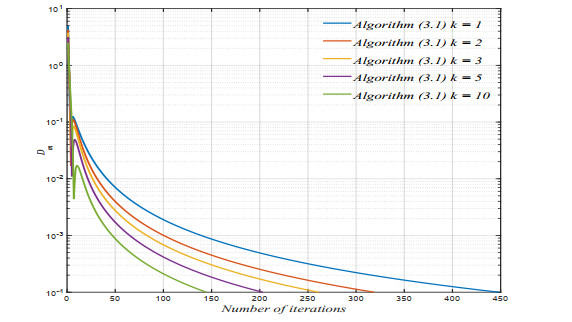
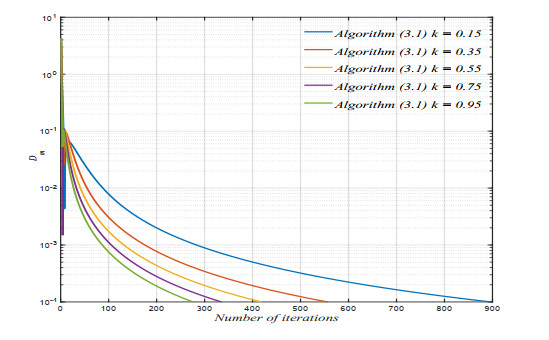
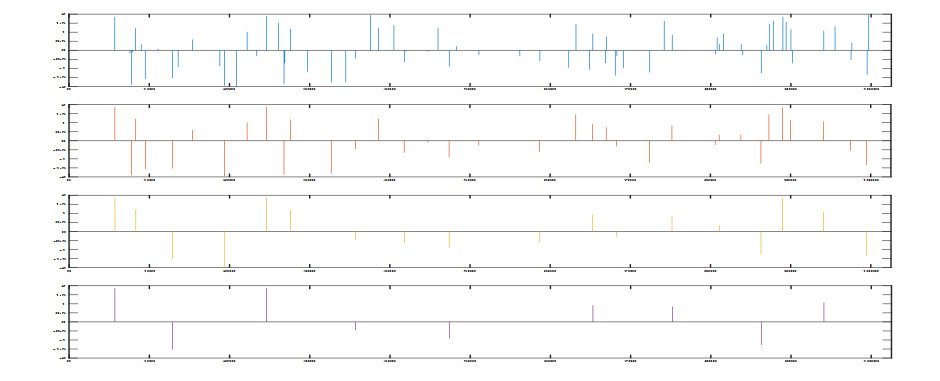
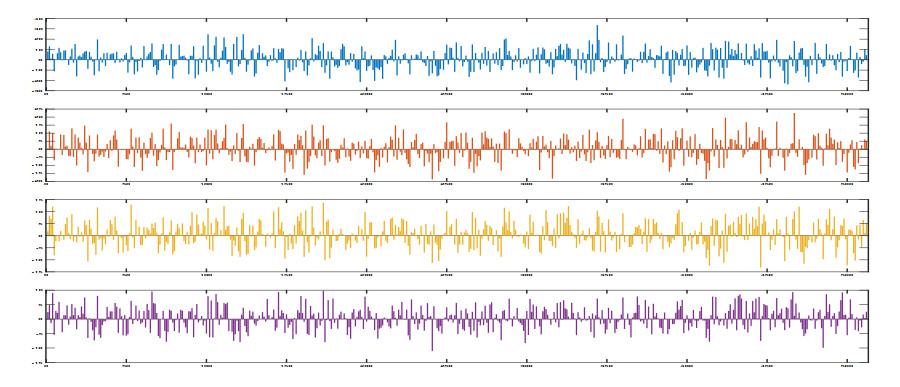


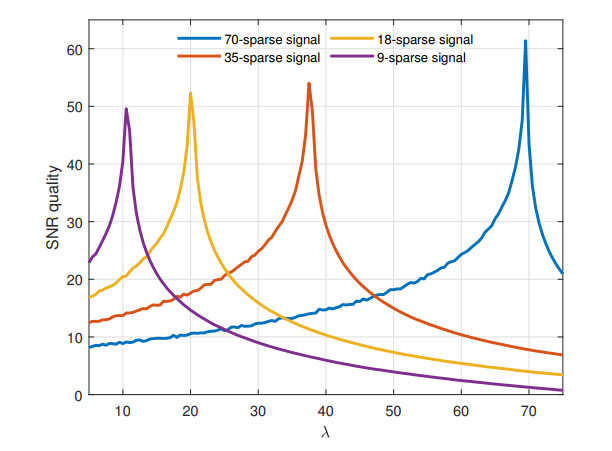
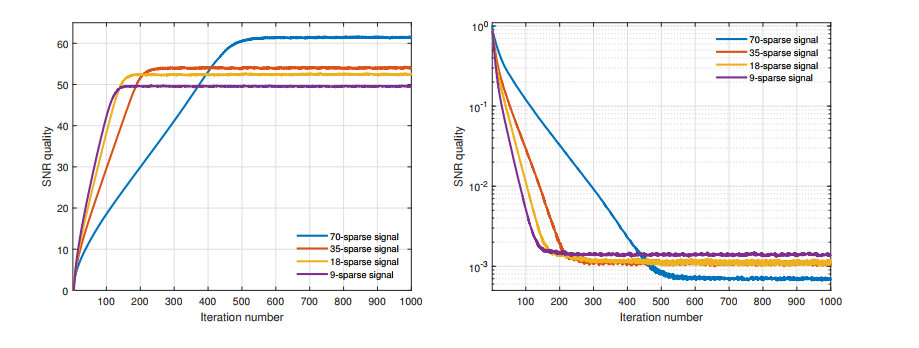
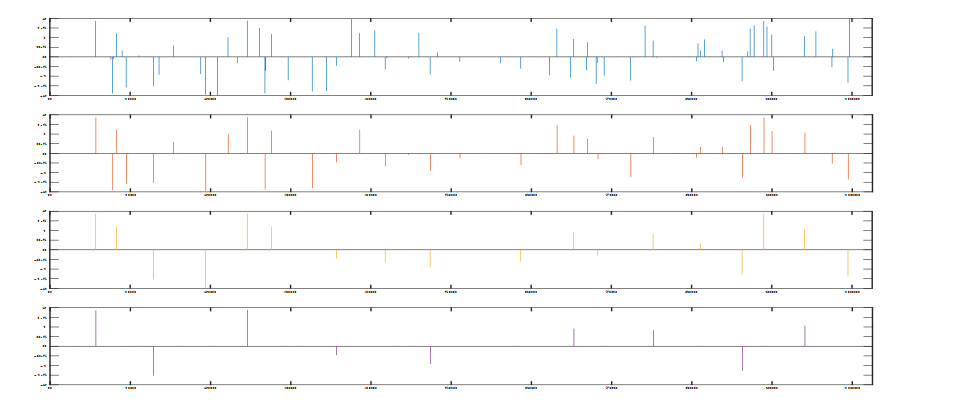


 DownLoad:
DownLoad: